Ron Base's Blog, page 5
February 9, 2023
A Farewell to Sanibel

I lost it on Sanibel Island the other day visiting the yellow cottage that used to be Gene’s Books.
For years, I did book signings in the garden behind the cottage or else in the bookshop itself, surrounded by—drowning in!—the books owner Gene Massey brought in endlessly, sometimes by the pallet load. There were so many books that making your way through the shop was like navigating a delightful maze.
We sold hundreds of Sanibel Sunset Detective novels out of that little cottage. I met readers from all over North America and Europe. Heard endlessly fascinating stories.
Now it is all gone, washed away by one of America’s worst hurricanes. So much of Sanibel and Fort Myers Beach went away with Gene’s. The Sanibel Sunset Detective and his author are very minor victims of the tragedy that unfolded when the storm hit. Standing inside the dark, empty shell that is what’s left of Gene’s, choking back emotion, I was struck by the finality of what has happened. Gene’s will not come back, and who knows how long it will take the islands to return to any sense of what they were before.
Along Periwinkle Way, the main island thoroughfare, it isn’t hard to be momentarily convinced that things aren’t so bad. Then you reach Bailey’s General Store, one of the island’s long-enduring landmarks, now a boarded-up derelict that must be totally rebuilt.

As you turn onto Sanibel Captiva Road, the full force of the devastation unfolds itself in miles of twisted dead vegetation. The proud, towering palms, the verdant green of undergrowth on either side of the roadway have become an ugly brown No Man’s Land. Impressive mansion-like homes, once hidden from view, are exposed on a wasted landscape.
Andy Rosse Lane on Captiva Island, home, in the Sanibel Sunset Detective novels to Tree Callister and his wife, Freddie, has been reduced to a bleak throughfare, flanked by dead trees.
Somehow the Mucky Duck, a Captiva institution at the end of the street, mostly survived, amazing since it is little more than a ramshackle one-story affair perched on the ground near the water. It recently reopened and last week patrons were lined up early for lunch.

Fort Myers Beach, no matter how much you have heard about its ruin, still comes as a shock. It’s been described as looking like a war zone, an all-too fitting description of the scene that unfolds as you pass a tangled mass of drydocked pleasure and fishing boats, coming off the Sky Bridge onto the island.
If you were told that a battle had been fought along Estero Boulevard, the main drag, blighted by collapsed structures and piles of debris, you would believe it. You have to remind yourself that the vast empty stretches along the boulevard not long ago were choc-a-block with storefronts and mobile home parks.

The rickety, old-Florida charm that was Times Square, adjacent to the bridge, has been wiped out. The square itself is now a parking lot ($5, cash, please), and the pier at the end is gone save for a few forlorn pilings. The Washington Post reports it may take up to ten years for the area to fully recover.
Hard to believe then the sight of tourists lugging beach chairs, heedlessly crossing the broken remnants of Times Square to sun bathe on the beach—the ultimate act of whistling past the graveyard, one imagines.
Visiting the places where for years I pursued the business of selling books and meeting readers, remembering the energetic silliness of a crowded Times Square on a Friday night; the early excitement of meeting readers at Baileys; spending Luminary, the pre-Christmas celebration on Captiva Island at an Andy Rosse Lane street corner, signing books by candlelight; Tuesdays outside Annette’s Book Nook at the now-boarded-up Santini Mall; meeting longtime readers each season at MacIntosh Books; and, of course, Gene’s yellow cottages…
Standing outside Gene’s, the memories flooded back, those years that gave me a new lease on my professional life when I was all but certain it was over. I have so much to thank the people and the island for. Sanibel will come back. Whether it will ever be quite the same is up for debate. I know it won’t be the same for me. The fallout from the hurricane plays a big part, but age, too, as well as a certain restless need to move on.
Time then to say a bittersweet farewell.
For now…

January 23, 2023
HOW I HELPED MAKE ROCK ‘N ROLL HISTORY

A one-day rock festival was held at Toronto’s Varsity Stadium Sep. 13, 1969, less than a month after the Woodstock Music Festival took place on a farm outside Bethel, New York. One festival quickly became iconic. The other was mostly forgotten.
Until now.
What became known as Revival 69 featured such legends of rock ’n roll as Chuck Berry, Jerry Lee Lewis, Bo Diddley, and Little Richard. The headliners were The Doors, at the height of their popularity—and notoriety. The international headline grabber, however, was the surprise appearance of John Lennon along with his new girlfriend, Yoko Ono, backed by what became known as the Plastic Ono Band.
I kind of stumbled into it, but was one of the more than twenty thousand people at Varsity Stadium that Saturday—how I helped make rock ’n roll history. I had no idea that anything historic was going on, and neither, I suspect, did most of the crowd in attendance.
The festival for the first time brought together an eclectic group of performers—Chicago was also there, so was Alice Cooper. Most notably, it marked the first time John Lennon performed onstage without the Beatles. A week after he returned to London, he formally quit the group.
Concert footage was shot by D.A. Pennebaker, the renowned documentary filmmaker who did the landmark Bob Dylan film, Dont Look Back. Pennebaker actually put a movie together but despite his towering reputation, apparently no one was interested in a documentary that heavily featured old rockers. The footage languished for years. The concert was all but forgotten. For me, it was a dim memory. Life moved on.
Yet over the years, the festival quietly took on an almost mythical status. It became known as Toronto’s Woodstock. Rolling Stone called it “the second most important event in rock ’roll history.” Who knew?
Now Toronto documentary filmmaker Ron Chapman has tracked down the lost Pennebaker footage, added contemporary interviews with many of the participants, and created Revival69: The Concert that Rocked the World, a superb account of the festival, its stars, and how it came to be.
The performance footage is terrific but what makes Revival 69 unique among concert films is the way Chapman weaves in the behind-the-scenes drama of two maverick Toronto promoters, John Brower and Ken Walker, working against all odds to wrestle success out of what initially looked like a disaster.
The story of how at the last possible moment they convinced John Lennon and Yoko Ono to put together a band and come to Toronto, alone is worth the price of admission. Thrown together overnight, the Plastic Ono Band, which included Eric Clapton, rehearsed at the back of the plane on the way to Toronto. The first time they played together was when they stepped on stage at Varsity Stadium.
I spoke with Chapman in connection with the virtual showing of Revival 69 this weekend at the Milton Film Festival. He pointed out that what Brower and Walker were able to pull off with John and Yoko Ono could never happen today considering the layers of security and management surrounding most performers.
My memory of the concert is of great excitement at Lennon’s sudden appearance, followed by disappointment as Yoko Ono took over, keening loudly and then wailing. Not knowing anything about the crazy, unlikely circumstances surrounding how Lennon and company got there, their performance looked pretty ragged. But, hey, it was John Lennon, the first and last time most of us ever saw him in person.
The veterans, Little Richard, Jerry Lee Lewis, and Chuck Berry, in my memory, stole the show. The headliners, The Doors, appeared last, and whether it was the lateness of the hour or the audience’s restless exhaustion, or a combination of both, Jim Morrison and his bandmates more or less bombed.
Somewhat guiltily, I must admit that for the twenty-year-old me attending the second most important event in rock history, my most vivid memory is of the guy in front of me dancing with his girlfriend while the Doors sang “Light My Fire.” Suddenly, the girlfriend literally threw her boyfriend onto the ground and pounced on him, yanking down his jeans. In the midst of the crowd, as Morrison tried “to set the night on fire,” she proceeded to do just that.
As soon as they finished, seemingly unfazed, they jumped to their feet and resumed dancing. If I wasn’t a memorable part of rock ’n roll history, they certainly were.
(Revival 69: The Concert That Rocked the World is available to stream online at the Milton Film Festival, Jan 25 to Jan 31. The festival, celebrating its tenth anniversary, this weekend is presenting a great film lineup both virtually and with in-person screenings at the FirstOntario Arts Centre Milton. For more information click on the link below:
Milton Film Festival
December 31, 2022
Barbara Walters and My (Cherry) Red Shirt
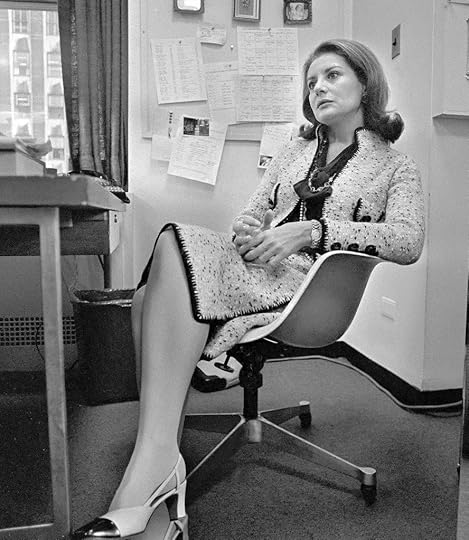
It was not so much a red shirt as it was a cherry red shirt that I was wearing when Barbara Walters walked in for our interview. Looking back all these years later, I cringe at the thought of that (cherry) red shirt.
However, as soon as she saw me in it, Walters immediately brightened. “I LOVE your shirt,” she said enthusiastically. Naturally, I was flattered. No bad reviews for this attractive, articulate, businesslike woman—who liked my (cherry) red shirt. Well, she said she did.
At that point, I must confess, I had only a vague idea of who Barbara Walters was. I knew she was a co-host on NBC’s hugely popular Today Show, but not much more than that. She had written a book, and that’s why she was in Detroit, not only talking to the press, but also in a couple of hours, to address a luncheon crowd.
At the time I talked to her, she had not yet even been named a co-anchor on the Today Show. This was years before ascending to iconic status as the go-to interviewer of very famous people, a household name, and breaker of glass ceilings—becoming the first female anchor of a U.S. network newscast.
The book she was promoting was titled How to Talk to Practically Anyone About Anything, basically a self-help book that also touched on the hardships and prejudices she had encountered in trying to make it as a woman in broadcasting.
It wasn’t until years later, that I learned the book had actually been ghost-written by my friend, Toronto journalist June Callwood. There is no mention in the book of Callwood’s involvement and Walters gave no indication during our talk that she had help with the writing.
As pleasant as our encounter was, I had no intention of attending the speech she was to give in the afternoon. However, when she asked me if I planned to attend, I could hardly say no. It was at that speech that I got a preview of the charismatic personality she was to become.
Speaking to a room full of what back then would have been called suburban housewives, she almost literally picked up her eager audience and held it in the palm of her hand. I had never seen anything quite like it, and have seldom seen anything like it since.
If I thought she was nothing more than a delightful daytime TV personality beforehand, that speech quickly changed my opinion. There was something very special about her. I came away dazzled, as did everyone else that afternoon.
I wrote about Walters’s amazing performance and, oh, yes, I happened to mention her admiration—feigned or otherwise—for my (cherry) red shirt. I never thought much more about it. Then, a few weeks later, a letter arrived. In those days, it was unusual to get a letter from anyone you had interviewed, let alone a celebrity.
This letter was from Barbara Walters.
“Of course, I remember your red shirt,” she wrote. “I loved that shirt.” She went on to gush about how much she enjoyed meeting me, and liked my piece. I didn’t believe any of it, of course—except, of course, I did. I thought of that letter from Barbara Walters hearing the sad news of her death at the age of 93, remembering how she so deftly lifted an audience and got to a young reporter in his (cherry) red shirt. And took the time to write him about it.
November 7, 2022
Lost in the Star
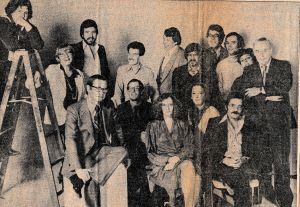 Faded memory: The Toronto Star Entertainment Department when I arrived in 1979
Faded memory: The Toronto Star Entertainment Department when I arrived in 1979
Last night I dreamed I went back to the Toronto Star newsroom again.
I step into the lobby at One Yonge Street and then take the elevator to the fifth floor. In my dream, Conrad Black is on the elevator. “Are you here to buy the Star,” I ask the newspaper mogul. “Not today,” he replies with a smile.
Leaving the elevator, I walk past the reception area. Not to worry about security. There is none. Anyone can walk into the newsroom and just about anyone does.
If you look over to the far right, there is the Entertainment Department where I worked for ten years, occupying one of the grey metal primary workstations as they called our desks in those days.
Facing Entertainment, if you look to the left, is Sports, known affectionately as the Toy Department. Next door, Entertainment, in pre-politically correct days, known, without affection, as the Pansy Patch. To the right of Entertainment is the Women’s Department. It is known as, well, the Women’s Department.
As usual, chaos reigns. There is Sid Adilman, the paper’s veteran entertainment columnist, knower of all things. He’s on the phone trying to explain to Gino Empry, Toronto’s best-known and most notorious publicist, why he didn’t get the item about Tony Bennett at the Imperial Room quite right.
Next to him, Gina Mallet, the Star’s volatile theatre critic, is in high dudgeon because her Stratford story is not on the front page of the Saturday entertainment section. Nearby, the television critic Jim Bawden—Phantom—is, as his nickname suggests, present but not really there, a curious but entirely likable chameleon at once in awe of Gina and, like the rest of us, in fear of her.
But wait—someone is missing from my dream. Ah, there he is now. Peter Goddard finally makes his entrance. He is the pop music critic and Jack of all cultural trades, rumpled, out of breath, in a hurry, my desk mate, the North Star I can cling to when navigating the various firestorms that come with surviving Canada’s largest and most demanding newspaper.
In my dream, I am lost on the vast landscape of the newsroom. Sid is yelling that we are on deadline, he needs my story. But what story does he want? The ceiling lights I always thought would kill us all glow brighter, the demands for a story, louder. The newsroom I’m lost in stretches on forever. I always wake up, of course, and after a moment realize it is just a dream.
But still…
I’ve had all sorts of adventures in the years since I left the Star, written a lot of different things, lived in a good many places. But wherever I am, whatever I’m doing, that dream keeps coming back to haunt me. It took me a long time to understand just how hardwired into my brain were those years at the Star—I probably spent more hours in that newsroom than I spent in my own home.
I thought about all this the other day as the Star closed down at One Yonge Street where it had been located for fifty years and prepared to move to new digs at a place called The Well.
A whole complicated panoply of emotions came roaring back—the small joys of daily bonding and suffering with a talented group of highly eccentric but dedicated professionals, the frustrations, the laughter, the anger, the lingering sense of failure I could never quite shake off.
I missed out on a final organized visit to the newsroom. Briefly, I was disappointed. But it was probably just as well. The newsroom that I could see from photos of the farewell event was nothing like the one I knew. Even before the end of its days, it had changed beyond anything I recognized.
So many of the people I worked with and loved back then are gone now—Sid, Gina, Bawden, and, most recently and sadly, sweet Peter. Except they aren’t. They live on… Sid demands my story. Gina is fired up about something or other. Bawden is disappearing into the ether. Goddard arrives and we exchange eyerolls—another chaotic day unfolding as it should.
It turns out I could not have gone back to the newsroom.
You see, I never left…
.
October 31, 2022
Ghosts of the Savoy
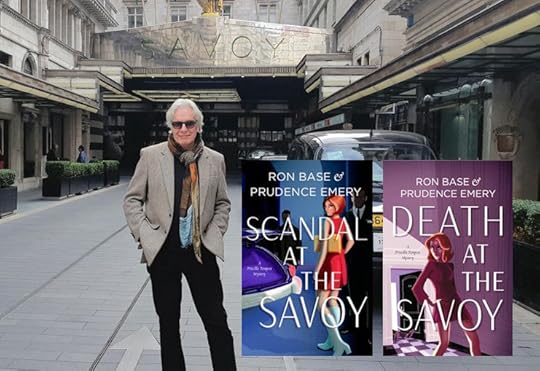
Seated on a banquette in a corner of the Savoy Hotel’s iconic American Bar, sipping one of Priscilla’s Buck Fizzes, the celebrated ghosts of the hotel’s legendary past swirl around. The 2022 Savoy is a sleek modern, beautifully run hotel in the midst of 21st Century London. Yet reminders of its glamourous past are everywhere present. Lining the walls along the corridor outside the bar are autographed photos of various celebrities that include Gary Cooper, Humphrey Bogart, and Lauren Bacall. Noël Coward peeps out from a glass case. A bronze bust of the famous playwright and longtime Savoy habitué is also on prominent display.
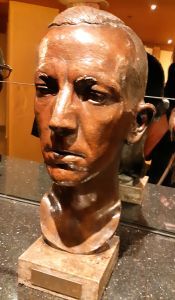
Off the Front Hall, in the Thames Foyer, beneath its dramatic glass-domed atrium, the Savoy’s traditional afternoon tea is served as a pianist tinkles the ivories in the gazebo that dominates the room. Patrons nibble at a selection of dainty sandwiches and homemade scones—with clotted cream, naturally— surrounded by lush portraits of Ava Gardner, Alfred Hitchcock, Marlene Dietrich, and Frank Sinatra, long-gone guests of the Savoy—the past very much a part of the hotel’s present.

That dazzling past is what fascinated us writing Death at the Savoy and now in its successor, Scandal at the Savoy. One of the pleasures visiting the contemporary hotel is discovering that the era in which we have set the novels has not been forgotten but is in fact celebrated, the ghosts of the Savoy linger on.
Even so, after spending time in the 2022 Savoy, it is difficult to imagine this Savoy as the hotel we have created in our novels. And that’s fine—as it should be. Our Savoy is a place of luxury, glamour, celebrity and, oh yes, the occasional murder.
It is the Savoy out of our creative imaginations. Is it the real Savoy? Of course not. Not any more than Raymond Chandler’s Los Angeles was the real Los Angles of the 1930s. Or that Julian Fellowes’s Downton Abbey resembles a real-life estate in turn-of-the-century Britain.
Prudence and I do nudge against the reality that she is able to provide, having worked for five years at the Savoy, beginning in 1968. But then we use that reality to allow our imaginations to run wild. Thus, the real Richard Burton becomes a drunk character in our novel making a pass at our heroine, Priscilla Tempest, in a Rolls Royce. In the upcoming Scandal at the Savoy, Priscilla can even sleep with a certain Canadian prime minister (remember, it’s 1968).
It’s all part of the real-but-unreal universe we have created for ourselves. This playing with reality turns out to be great fun. In our daily lives, Prudence and I control nothing. In the world we have created, we control everything. What a joy!

Back at the ultra-swank 2022 Savoy Hotel, in the American Bar, the small circular glass-topped tables, ornamented with tastefully shaded lamps, are occupied by the early evening, pre-theatre crowd. The murmur of conversation fills the room as white-coated waiters serve cocktails on silver trays. There are no signs among the patrons of the rich, famous, and aristocratic who once crowded the bar—the sort of people who can always be found lurking in the pages of our novels. However, in the subdued light of the American Bar at night, the ghosts of the Savoy are very much present. They exist on the walls and in memory.
Captured forever in the pages of Death at the Savoy and Scandal at the Savoy.
Death at the Savoy is now available in the United States as a print, audio, and e-book. You can find the novel at Amazon.com and at Barnes & Noble.
Scandal at the Savoy will be published March 18, 2023.
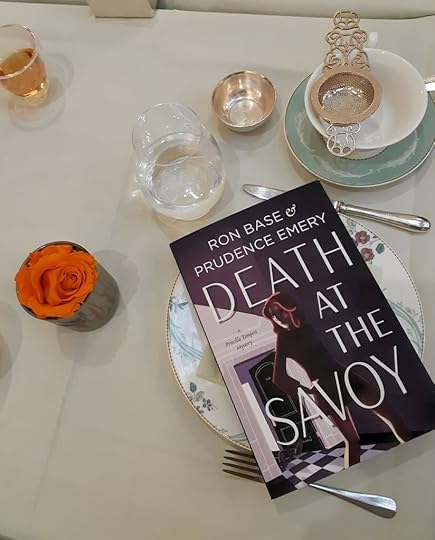
.
May 29, 2022
Evolution of a Novel: How Death at the Savoy Came to Be
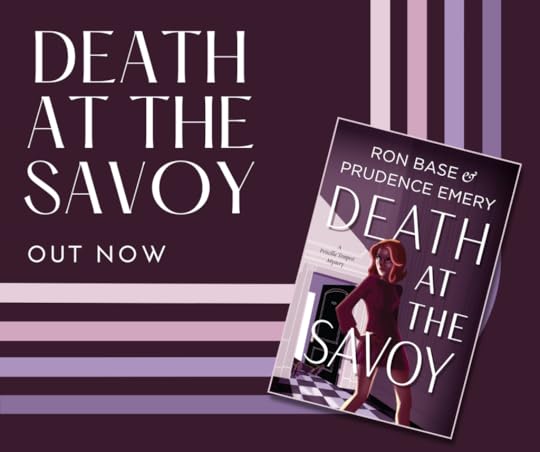
Susan Walker, former editor of Quill and Quire, who also served as the Toronto Star’s book editor, and no slouch when it comes to all things literary, has written a wonderful piece about how my new novel (with Prudence Emery), Death at the Savoy, evolved to the point where it has now been published. Here is what Susan wrote…
Priscilla Tempest. Remember that name: you are going to be hearing more from this 20-something publicist for The Savoy hotel, given her tendency to be on the scene when dead bodies are found on the premises.
Priscilla is the protagonist of Death at the Savoy, a murder mystery co-authored by Ron Base and Prudence Emery. It is out this month from Douglas & McIntyre and readers are bound to be hooked. The second Priscilla Tempest mystery, Scandal at the Savoy, is already written and a third is underway.
An intrepid Canadian who lands herself a job as press liaison at London’s famous Savoy hotel in the 1960s, Priscilla was born out of Prudence Emery’s memoir Nanaimo Girl, published by Cormorant Books in 2020.
“Ron called me after he’d read Nanaimo Girl and said he thought the Savoy section could be the makings of a good mystery,” says Emery, sitting in her Victoria BC living-room. Base was a young freelance writer in the 1970s when Prudence used to call him up from various movie sets and offer him interviews with big stars. Later, he became the Toronto Star’s movie critic, took a turn in LA as a scriptwriter and began writing novels, publishing Magic Man with St. Martin’s Press in 2006.
Base, now author of a 13-book series featuring The Sanibel Sunset Detective (West-End Books), recalls how Nanaimo Girl’s adventures at the Savoy inspired him. “I had no idea Prudence led such a glamorous life during those five years [1968 to 1973] at the Savoy. I thought, plucky heroine working in the press office, celebrities, dead bodies in the hotel — that could really work.”
So he called and said, “How would you like to collaborate on a mystery novel with me?” On the other end of the line, Prudence wasn’t so sure. “My first instinct was to say no, because a murder mystery is not like a memoir where you have all the material; it takes a lot of imagination and cleverness to plot. But then I thought, well why not?”
And so Priscilla took shape (Prudence came up with the first name and Ron came up with Tempest), Ron imagining and plotting and Prudence verifying or suggesting details and plot twists. And so, with a little help from Zoom, two old pals have been co-writing a book while living 3,000 kilometres apart.
“Prudence and I always had a great rapport,” says Ron. “She dragged me all over the place: a snowbank in Barkerville with Rod Steiger (Klondike Fever); to Israel for the filming of It Rained All Night the Day I Left with Tony Curtis; and she got me kissed by Ann-Margret (Middle Age Crazy).
Collaboration, new to both authors, was a matter of rekindling their long-time rapport, says Base. “Prudence was the guardian of all things Savoy. Anything we couldn’t get squared away, Prudence had people who could help us. When it came to the Colonel Mustard-candlestick-in-the-library stuff, I knew what to do. But the original plot, and the idea of poisoning was hers.
“This became a great collaboration. I would send her pages and she would send them back. Basically it was a lot of fun and I never think of writing novels as fun.” No surprise that the Ponti company has optioned film and TV rights for Death at the Savoy and the authors’ agent has secured a two-book audiobook deal.
Most fun for the reader are the celebrity characters in Death at the Savoy, all of the real personages now dead. Noël Coward, who befriends Priscilla, plays a crucial role in the plot. Richard Burton makes drunken advances to Priscilla in the back of a Rolls Royce, in between drunken arguments with Elizabeth Taylor. Princess Margaret doesn’t actually make an appearance, but her assignations at the Savoy are crucial to the murder plot.
But, hey, no spoilers here. You’ll just have to buy the book.
Death at the Savoy; A Priscilla Tempest Mystery
By Ron Base and Prudence Emery
Douglas & McIntyre, $18.95
May 11, 2022
DEATH AT THE SAVOY COMES TO THE MOVIES
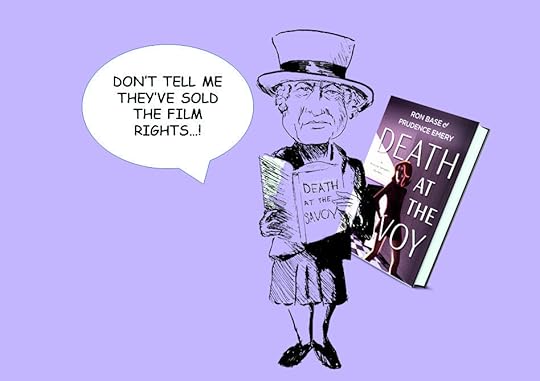
Prudence Emery and I are delighted that Los Angeles-based The Ponti Company has acquired movie and TV rights to Death at the Savoy, even before its publication May 28. Here’s what producers Sasha Alexander-Ponti and Edoardo Ponti had to say about the acquisition:
“The moment we read ‘Death at the Savoy‘ we were immediately charmed and inspired by the humor, style and page turning quality of the storytelling but also completely smitten with an amazing ensemble cast of fascinating and hilarious characters led by the colorful and charismatic young female protagonist.
“Prudence and Ron have written a book that speaks to the global audiences’ desire to immerse themselves in a world with glamour and history as they take you through the twists and turns of an irresistible murder mystery. We are so thrilled to partner with them both in bringing this series to life.”
As we’ve always said, “Good girls go to heaven. Bad girls go to the movies.”
Want to see what the excitement is all about. You can pre-order the novel at Amazon.ca.
May 4, 2022
FINALLY, A BOOK!
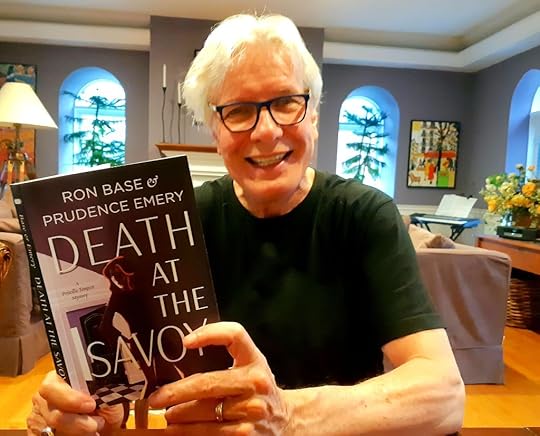
Death at the Savoy arrived on my doorstep early this morning. It’s been a long but mostly delightful journey getting here, in close company with my old friend and collaborator, Prudence Emery.
For an author there is nothing quite like the momentary high that you experience when you first hold the book in your hands that after nearly two years of sweat and toil has become a reality. Prudence and I had so much help and support getting to this moment. Many thanks to everyone at our publisher, Douglas & McIntyre, to the platoon of editors at West-End Books and at D&M who tirelessly saved us from ourselves, and to Glenn Brucker who designed the unique, attention-grabbing cover. There cannot be enough thanks when it comes to our indefatigable agent, Bill Hanna—the whirling dervish!
Now the hard part begins—selling Death at the Savoy! So far so good. Hollywood has optioned the book. There is an audio book deal for the first two novels. Even the early reviews have been laudatory. Death is being officially launched virtually May 30 and, of course, everyone is invited.
For now, the authors are struggling into fishnet stockings, smearing on the red lipstick and preparing to get out there and promote the book. You, dear reader, can help by pre-ordering Death at the Savoy online at Chapters or Amazon or at your favorite independent bookstore (the official pub date is May 28).
Meanwhile, time to stop feeling warm and fuzzy and return to earth. We have book two in the series to get out!
To pre-order your copy of Death at the Savoy please click on the link below…
May 1, 2022
DEATH AT THE SAVOY BECOMES A (VIRTUAL) REALITY…
April 20, 2022
DIRTY BOOKS: WHEN NOVELS COULD SHOCK
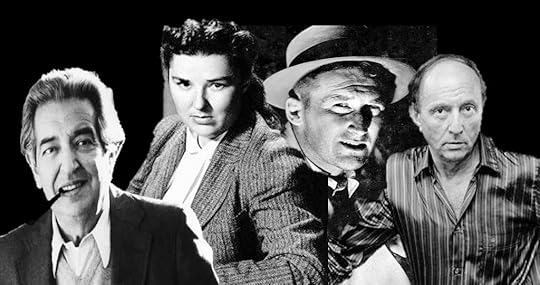 Irving Wallace (left), Grace Metalious, Mickey Spillane, Harold Robbins
Irving Wallace (left), Grace Metalious, Mickey Spillane, Harold RobbinsThe lengthy process that is publishing a new novel, started my mind drifting back to the past, where it all-too-often drifts lately, to a lost era when popular novels actually influenced the culture and stirred controversy in ways unheard of today.
When I was growing up, popular fiction was often popular because it occupied forbidden territory that I was sternly ordered not to enter. On that dark terrain lay…sex! Naturally, I couldn’t wait to get to where I wasn’t supposed to go. Reading wasn’t so much reading as it was an act of rebellion—and exploration into the unknown.
The novelists who shocked readers and drove me to their books late at night, by flashlight, under covers—Grace Metalious (Peyton Place), Irving Wallace (The Chapman Report), Mickey Spillane (the Mike Hammer mysteries), and, most blatantly, and therefore most successfully, Harold Robbins (The Carpetbaggers).
Those writers are all-but-forgotten, and no one gets too concerned about sex in literature (unless you are the Texas or Florida school boards and legislatures), but in the late fifties and early sixties they were breaking new ground with explicit sexuality that previously had been banned (you couldn’t for a long time read either Henry Miller or D. H. Lawrence’s Lady Chatterley’s Lover, published, for heaven’s sake, in 1928).
In those days, if an inquisitive young person like myself wanted information about sex, novels provided it. Sizzling was the word often used. And steamy, too. Critically, they were dismissed as potboilers but they were outrageously popular, the subjects for endless debate and raging denunciations from local governments and the church, labelled “dirty books.”
I couldn’t wait to get my hands on them.
Years later, as a journalist, I talked to some of the writers who had created those, ahem, dirty books. Irving Wallace, a screenwriter who began writing novels after he became disillusioned with Hollywood, turned out to be an amiable, mild-mannered guy still slightly taken aback by the controversy over The Chapman Report, his runaway bestseller, whose plot was inspired by the publication of the Kinsey Report (talk about controversy!).
By the time I met up with Mickey Spillane, his days of churning out lurid, bestselling mystery paperbacks such as I, The Jury (the novel that made him) and Kiss Me Deadly were behind him (after selling 225 million copies). In their 1950s heyday those novels, full of violence and lots of implied sex, had helped fuel the exploding paperback book industry.
I went down to Mickey’s home in Murrells Inlet, South Carolina to talk to him, a gruff, entirely likable guy who had held onto his trademark brush cut, proud of the fact that, remarkably, he typed a single draft of a Mike Hammer mystery, never going back or editing what he had written, before sending it off to his publisher (he swore he wrote I, The Jury in nine days).
No one adopted the role of playboy author more overtly than Harold Robbins. He lived the most glamorous life of all the writers from that era, cheerfully insisting that he drew the sex scenes in such novels as The Carpetbaggers and The Adventurers from personal experience. In Detroit to promote one of his later books, small and foul-mouthed, he insisted on being surrounded by models hired for the evening, and had no qualms about grabbing at his groin when discussing the sex in his books. Not a nice guy.
Although they don’t sell anything like they once did, and now seem almost old-fashioned, most of the scandalous titles from my past are still in print—and you no longer have to read them by flashlight under bedcovers.
Amazingly, however, Peyton Place, Grace Metalious’s novel of murder, incest, and abortion in a New Hampshire town which sold 30 million copies when it was published in 1956, had been turned into two movies, and a hit TV series, and whose name had become synonymous for elicit goings-on in small town America, was out of print for years.
It was rescued by author Ardis Cameron who persuaded a small New England press to republish it. I once attended a lecture Ms. Cameron gave in Camden, Maine (where the Lana Turner movie was filmed) in which she argued effectively that Peyton Place was much more than a hugely popular “dirty novel”, that it had done much to break down the barriers surrounding conservative North American cultural thinking.
I suspect you could make the same argument about Wallace, Spillane, Robbins et al who so gleefully poked at the rigid boundaries of the time in ways that no author can today, if only because those boundaries have been long since breached.
Today’s fiction hardly causes a ripple let alone a tsunami of controversy the way it once did. You would be hard-pressed to even come across a sex scene in a contemporary novel. The dirty book, for good or ill, is a thing of the distant past.
And in keeping with the mores of the time, I like to think of the novel I have co-authored with Prudence Emery, Death at the Savoy, as a sexy mystery. A dirty book? Heaven forbid!




